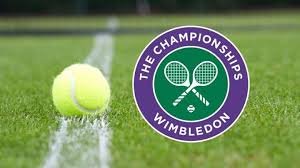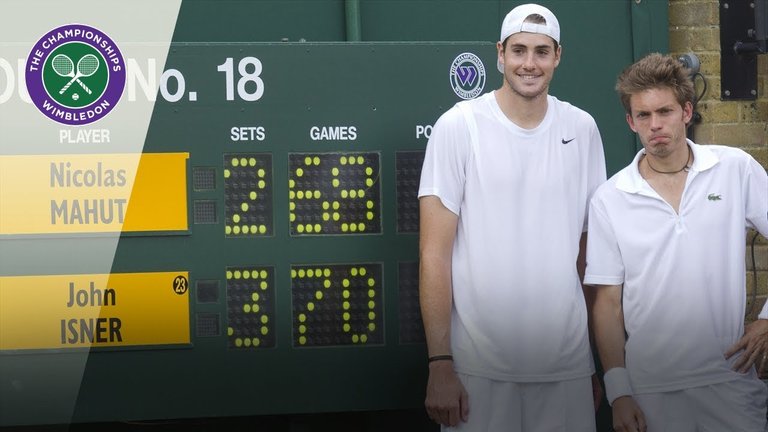
The rule to hold a tiebreak in the final set of a Grand Slam has been a long standing debate. Currently only the US Open adopt the rule that all 5 sets will be decided by a tiebreak at six games all.
The debate has grown strong since the famous fifth set at the 2010 Wimbledon Championships where American, John Isner, famously beat Frenchman, Nicolas Mahut, 6–4, 3–6, 6–7, 7–6, 70–68 in a match that lasted 11 hours, 5 minutes spread over the course of three days.
This was recorded as the longest tennis match in the history of the sport and will likely remain that way with Wimbledon leading the charge of the remaining 3 Grand Slams that still play the "Advantage" set in the 5th and deciding set of a match.

It has still taken a little more than 8 years, since this immense battle, for Wimbledon to actually input a rule that will no longer allow a 5th set to go on indefinitely until a player can successfully win 2 games in a row. Wimbledon’s five set rules were brought into question again during the 2018 Championships when South African, Kevin Anderson, defeated Isner in a six hour, 36 minute epic 7-6 6-7 6-7 6-4 26-24 — the second longest match in grand slam history.
In both cases the winner of the epic matches went on to lose in straight sets in the following round (Anderson's coming in the final of the championships) So the debate was reignited as the players health and physical ability to perform in future rounds, following such a battle, was bought into question as well as the fairness to players and spectators that are hoping to watch players performing at their best

If this Wimbledon semi-final was agonising, the quarter-final against the great Roger Federer - which ended at 13-11 in the fifth - had been almost as exhausting.
The reception has been split between those that believe this rule is old and required updating and those that feel the entertainment of such a result comes very rarely and therefore should not need to be adapted.
In the last 5 years at Wimbledon, out of 635 matches, 5 have gone beyond 12-12. That's 0.79% of all matches.
In the last 20 years only 15 matches have gone beyond 12-12 in the final set at all Grand Slams (One of which was the 2009 Wimbledon final between Roger Federer & Andy Roddick which concluded with Federer winning 16-14 in the fifth set and breaking Pete Sampras record of 14 Grand Slam titles) so some ask why does this rule need to exist?
All England Lawn Tennis Club (AELTC) Chairman Philip Brook said: “In reaching this decision, the AELTC Committee sought the feedback of both players and officials, analysed two decades of match data, and considered other factors including scheduling complexities and spectator experience.”

“Our view was that the time had come to introduce a tie-break method for matches that had not reached their natural conclusion at a reasonable point during the deciding set.”
“While we know the instances of matches extending deep into the final set are rare, we feel that a tie-break at 12-12 strikes an equitable balance between allowing players ample opportunity to complete the match to advantage, while also providing certainty that the match will reach a conclusion in an acceptable time frame”
It will be interesting to see whether the Australian Open and the French Open, two tournaments which have no finish line to their deciding sets, follow suit. Pressure is likely to be applied by the leading players, as this is seen as a welfare issue. Repeated exposure to matches that last over four hours can have a debilitating effect.
My personal opinion is that the rule will only affect a very small percentage of matches played at Wimbledon and therefore shouldn't be a big focus. I agree that it helps to put a definite end to matches that become epics and I think it's good to remind ourselves that for a real epic to develop, you need someone like Isner, who has won 92 per cent of service games across his career, but only 11 per cent when returning to play another player with the same game style, which doesn't occur too often. Put a pair of big servers, with stats similar to this, on the same court and a weird logic can develop.
The rule will also apply to the women's draw and to doubles as well. Although, in the case of the women, it is highly unusual for a final set to last into double digits, because the incidence of breaks of serve is significantly higher than in the men's game.
To summarise I think Wimbledon have made the right choice to add in a rule that will rarely be applied but will be necessary and beneficial for the players that become involved in such epics that can be detrimental to their shot at the title.
Thanks for reading
Oly
#tennis #allenglandclub #grandslam #tiebreak #isner #mahut #anderson #curie @curie #fifthset #ozopen #rolandgarros